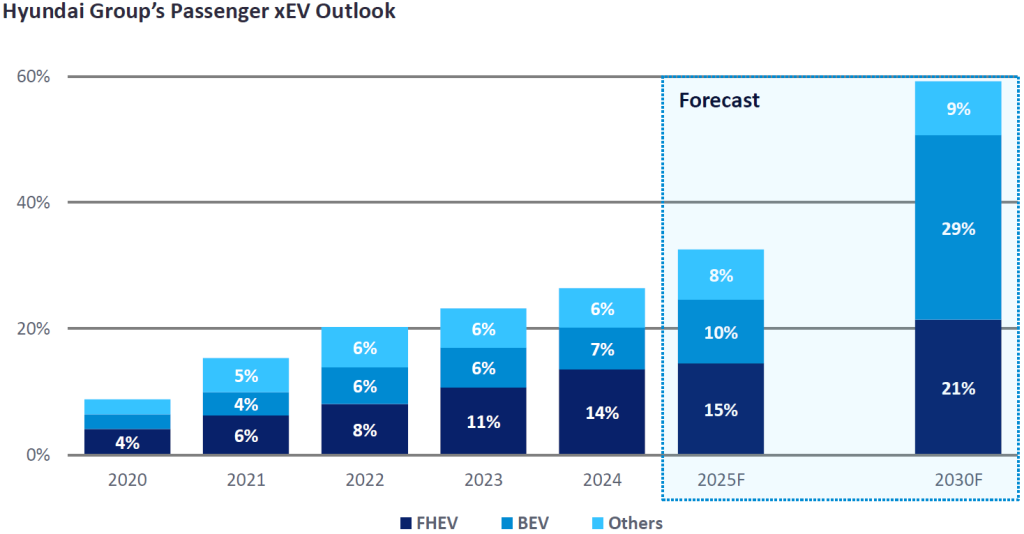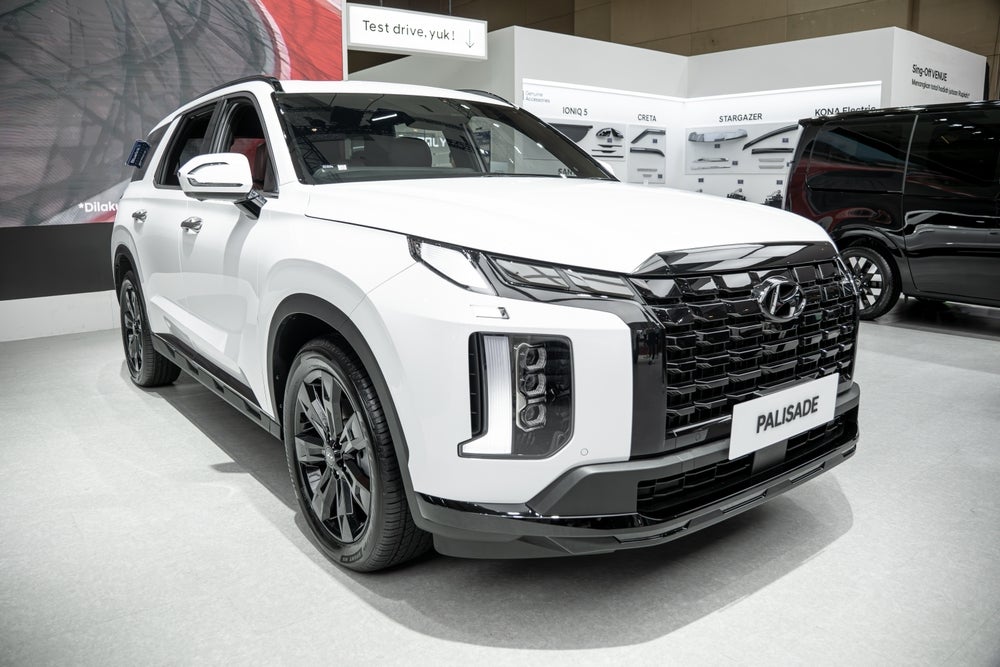As Hyundai Group navigates the slowdown in global Electric Vehicle (EV) demand, the company has started to refocus its efforts on its existing xEV technology — the hybrid vehicle — to drive growth. Even Genesis, the group’s luxury brand, has shifted from a strategy of full electrification to include hybrid configurations in its product line-up in response to the rising popularity of such vehicles.

In 2011, Hyundai introduced its first full hybrid system, known as the “Transmission Mounted Electrical Device” (TMED), with the Sonata model in Korea. This proprietary series-hybrid system features an electric motor positioned between the engine and transmission — referred to as the P2 configuration — and utilizes a dual-clutch mechanism to manage power distribution. Additionally, this system can operate solely on electric power under certain conditions. Over the past decade, Hyundai has integrated this hybrid system into several of its models. Sales of its Full Hybrid Electric Vehicles (FHEVs) surged from over 222k units in 2020 to more than 770k units in 2024, with an average growth rate of 36% and accounting for approximately 14% of its global Passenger Vehicle (PV) sales.
However, Hyundai’s hybrid system began to lag in fuel economy and driving performance compared to the latest models from competitors. As a result, in April 2025, the group unveiled its new Full Hybrid powertrain, known as TMED-II, which will debut in the latest Hyundai Palisade. The enhanced hybrid system not only retains the P2 motor at the transmission input but also integrates an additional motor at the engine output, known as the P1 configuration. The group claims that this innovation significantly improves fuel economy over the previous generation. Furthermore, Hyundai plans to incorporate the new hybrid system into three vehicle categories: Large, Midsize, and Compact. The same system architecture is also set to be implemented in the longitudinal powertrains of Genesis models.
It is anticipated that the next-generation Hyundai hybrid system will enhance performance and fuel efficiency across various segments. The group asserts that this new hybrid system offers a 45% improvement in fuel economy and a 29% increase in power compared to Internal Combustion Engines (ICEs) of the same category.
We expect increased FHEV market penetration in the B and E segments, particularly in the B segment within emerging markets like India, where FHEVs are likely to replace diesel vehicles. Meanwhile, growth in the E segment is expected to be driven by Large SUVs from the Hyundai and Kia brands, as well as Genesis models. By 2030, our projections indicate that the group will expand its FHEV presence to approximately 1.3 mn units worldwide, representing over 21% of its global sales.

However, as global demand for EVs rises due to technological advancements and stricter emission regulations, the growth of FHEVs is expected to slow in the latter part of the decade and eventually be surpassed by pure EVs. Nevertheless, FHEVs will continue to play a crucial role in the group’s strategy to achieve its goal of full electrification.

US Tariffs are shifting - will you react or anticipate?
Don’t let policy changes catch you off guard. Stay proactive with real-time data and expert analysis.
By GlobalDataKwan Wongwetsawat, Senior Analyst, Global Powertrain, GlobalData
This article was first published on GlobalData’s dedicated research platform, the Automotive Intelligence Center.





